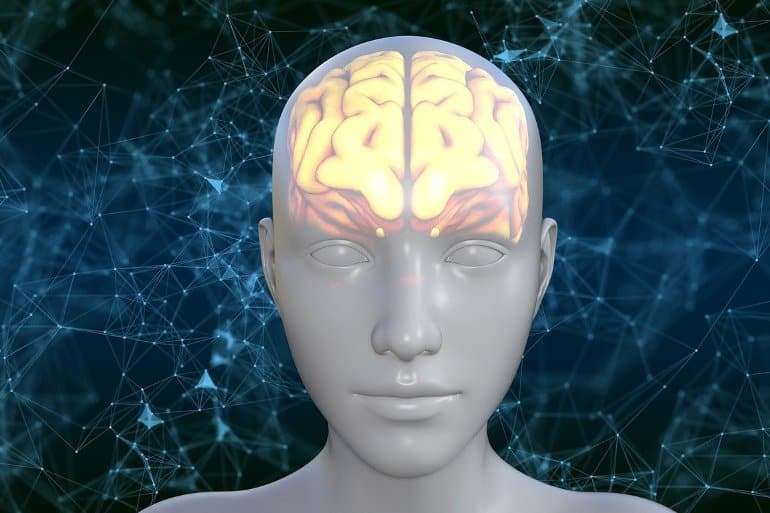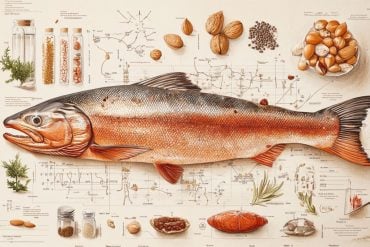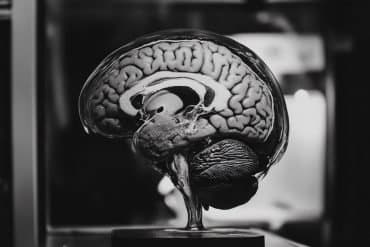Summary: Glucosamine is a major component of brain glycogen, a new study reports.
Source: University of Kentucky
Using novel imaging methods for studying brain metabolism, University of Kentucky researchers have identified the reservoir for a necessary sugar in the brain. Glycogen serves as a storage depot for the sugar glucose.
The laboratories of Ramon Sun, Ph.D., assistant professor of neuroscience, Markey Cancer Center at the University of Kentucky College of Medicine, and Matthew Gentry, Ph.D., professor of molecular and cellular biochemistry and director of the Lafora Epilepsy Cure Initiative at the University of Kentucky College of Medicine discovered that glucose – the sugar used for cellular energy production – was not the only sugar contained in glycogen in the brain. Brain glycogen also contained another sugar called glucosamine.
The full study was recently published in Cell Metabolism.
Some forms of glucosamine, such as glucosamine sulfate and glucosamine hydrochloride, are common supplements used to improve joint movement.
However, within cells, glucosamine is an essential sugar needed for the complex carbohydrate chains that are attached to proteins in a process called glycosylation. These sugar chains decorate proteins and the sugar decorations are critical for the appropriate function of myriad proteins.
Discovering that glucosamine is a major component of brain glycogen provides key insight into neurological diseases caused by aberrant glycogen-like cellular aggregates called polyglucosan bodies (PGBs).
Lafora disease is a rare, inherited childhood dementia caused by PGBs and this study demonstrates that the Lafora disease PGBs sequester glucosamine, leading to numerous cellular perturbations. PGBs also accumulate in the brain as people age and in people with other forms of dementia. Thus, the discovery that glycogen is also a storage cache for glucosamine has broad implications for understanding neurological changes associated with aging.
Using biochemical approaches, the researchers determined the sugar composition of glycogen in the muscle, liver, and brain of mice. Unlike muscle glycogen, which had only 1% glucosamine, and liver glycogen, which had less than 1% glucosamine, brain glycogen contained 25% glucosamine. “The discovery that brain glycogen is comprised of 25% glucosamine was stunning,” stated Sun.
Upon making this surprising discovery, they then identified the enzymes responsible for incorporating glucosamine into glycogen and for releasing glucosamine from glycogen. Again, the discovery was unexpected as these enzymes are the same ones used to incorporate glucose into and release glucose from glycogen.
To understand the implications of their findings for Lafora disease and neurological problems arising from PGBs, the researchers used their newly developed technique called matrix-assisted laser desorption/ionization traveling-wave ion-mobility high-resolution mass spectrometry (MALDI TW IMS) to measure and visualize the amount of glycogen in different regions of the brain. They also used this technique to quantify changes in the specific patterns of the sugar decorations on proteins in multiple regions of the brain.
The team applied MALDI TW IMS to analyze the brains of healthy mice and of two different mouse models of glycogen storage diseases: a model of Lafora disease and a model of glucose storage disease (GSD) type III. Sun commented, “This new technique allows us to quantify the amount of these sugars with high accuracy while also maintaining the spatial distribution within the brain regarding where the sugars are located. It is crucial that the brain has the correct sugars in the right location within the brain.”
These studies revealed that without the ability to properly regulate brain glycogen metabolism, not only do PGBs form, which perturbs cell metabolism, but the sugar decoration of proteins is also altered. Excitingly, they could restore protein sugar decoration by injecting an antibody-enzyme fusion (VAL-0417) into the brains of Lafora disease mice to degrade the PGBs.

Their findings show a direct connection between abnormal glycogen storage and defective protein function in the brain. Their findings have implications for many other GSDs and congenital disorders of glycosylation, which cause severe neurological symptoms, including epilepsy and dementia.
“Multiple neurological diseases have blockades in these metabolic pathways. I’m sure these pathways are going to be important in other neuro-centric diseases as well. Brain glycogen is comprised of glucose and glucosamine and brain metabolism has to balance both in order to stay healthy,” explained Gentry.
The Gentry and Sun laboratories collaborated with several others from UK College of Medicine including Drs. Craig Vander Kooi, professor of molecular and cellular biochemistry, Charles Waechter, professor of molecular and cellular biochemistry, Lance Johnson, assistant professor of physiology, Christine Brainson, assistant professor of toxicology and cancer biology.
They also worked with researchers from Indiana University School of Medicine including Drs. Anna A. DePaoli-Roach, professor of biochemistry and molecular biology, Peter J. Roach, professor of biochemistry and molecular biology, Thomas D. Hurley, professor of biochemistry and molecular biology. Richard Taylor, professor of chemistry and biochemistry, from the University of Notre Dame, and Richard Drake, professor of cell and molecular pharmacology and experimental therapeutics from the Medical University of South Carolina, also contributed to this work.
“This type of transdisciplinary collaborative research takes place at UK because of strong leadership from College of Medicine Dean Robert DiPaola, Dr. Mark Evers, Vice President for Research Lisa Cassis, Ph.D. and others,” stated Sun.
Funding: Research reported in this publication was supported by the National Institute of Neurological Disorders and Stroke of the National Institutes of Health under Award Numbers R35NS116824 and P01NS097197, the National Institute on Aging of the National Institutes of Health under Award Number R01AG066653 and R01AG062550, the National Institute of Diabetes and Digestive and Kidney Diseases of the National Institutes of Health under Award Number R01DK27221, and the National Cancer Institute of the National Institutes of Health under Award Number P30CA177558. The content is solely the responsibility of the authors and does not necessarily represent the official views of the National Institutes of Health.
This research was also supported by St Baldrick’s Career Development Award, V-Scholar Grant, Rally Foundation Independent Investigator grant, and the University of Notre Dame Reisenauer Family GSD Research Fund.
About this neuroscience research news
Source: University of Kentucky
Contact: Hillary Smith – University of Kentucky
Image: The image is in the public domain
Original Research: Closed access.
“Brain glycogen serves as a critical glucosamine cache required for protein glycosylation” by Ramon Sun et al. Cell Metabolism
Abstract
Brain glycogen serves as a critical glucosamine cache required for protein glycosylation
Glycosylation defects are a hallmark of many nervous system diseases. However, the molecular and metabolic basis for this pathology is not fully understood. In this study, we found that N-linked protein glycosylation in the brain is metabolically channeled to glucosamine metabolism through glycogenolysis. We discovered that glucosamine is an abundant constituent of brain glycogen, which functions as a glucosamine reservoir for multiple glycoconjugates.
We demonstrated the enzymatic incorporation of glucosamine into glycogen by glycogen synthase, and the release by glycogen phosphorylase by biochemical and structural methodologies, in primary astrocytes, and in vivo by isotopic tracing and mass spectrometry.
Using two mouse models of glycogen storage diseases, we showed that disruption of brain glycogen metabolism causes global decreases in free pools of UDP-N-acetylglucosamine and N-linked protein glycosylation. These findings revealed fundamental biological roles of brain glycogen in protein glycosylation with direct relevance to multiple human diseases of the central nervous system.







